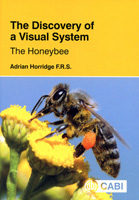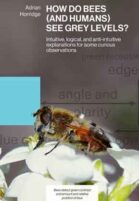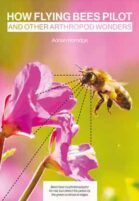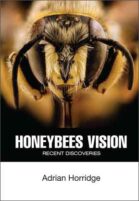In this hardback book, Adrian Horridge sets out the curious and contentious history of how the visual system of the honeybee came to be understood and how, in his view, the current accepted theory is completely wrong. Based on his own meticulous experimental work and historic analysis of past literature over many years, Horridge tells the story of a century of neglect of old experimental results, errors of interpretation, sharp disagreements, and failures of the scientific method. The design of the experiments and the methods of making inferences from observations are critically examined, with the conclusion that often scientists are hesitant, imperfect and misleading, ignoring the work of others, and failing to consider alternative explanations.
The book then gives Horridge’s conclusions of what honeybees actually see. For example, honeybees detect some visual features such as edges and colours, but there is no sign that they reconstruct patterns or put together features to form objects. Bees detect motion but have no perception of what it is that moves, and certainly they do not recognise objects or colours by their shapes. Yet they clearly see well enough to fly and find food with a minute brain. The surprising conclusion is that bee vision is adapted to the recognition of places, not things or colours.
A proper understanding of the visual system of the honeybee (and other insects) can be used to manipulate visual cues in crop science and horticulture to encourage pollination, or enhance pest management. It is also vital for the development of artificial visual systems in robotics.
This fascinating book is essential reading for any scientist with an interest in insect neuroscience and visual systems, but also for anyone with an interest in the history of science and the way science itself can progress.
Adrian Horridge
Emeritus Professor at the Australian National University, Canberra. He was made a Fellow of the Royal Society in 1969 and became one of the foremost neuroscientists of his generation. He has been working on insect visual systems since the 1960s and continues that work to this day.






